Digging for history

Stand high on the South Downs at Butts Brow and you can try to imagine what it was like for our predecessors thousands of years ago.
Their gaze would have taken in sparkling sea on two sides and rolling hills, curving down to valleys.
Forests would have covered much of the land but the shape of the hills, falling sharply to the levels east of the town, would be largely unaltered.
Today, the sound of the breeze rustling through the dry summer grasses is broken only by the sound of metal on flint and gentle scraping.
A team of archaeologists and volunteers crawl in nearby trenches under the relentless sun, focused on the layers of soil, flint and chalk.
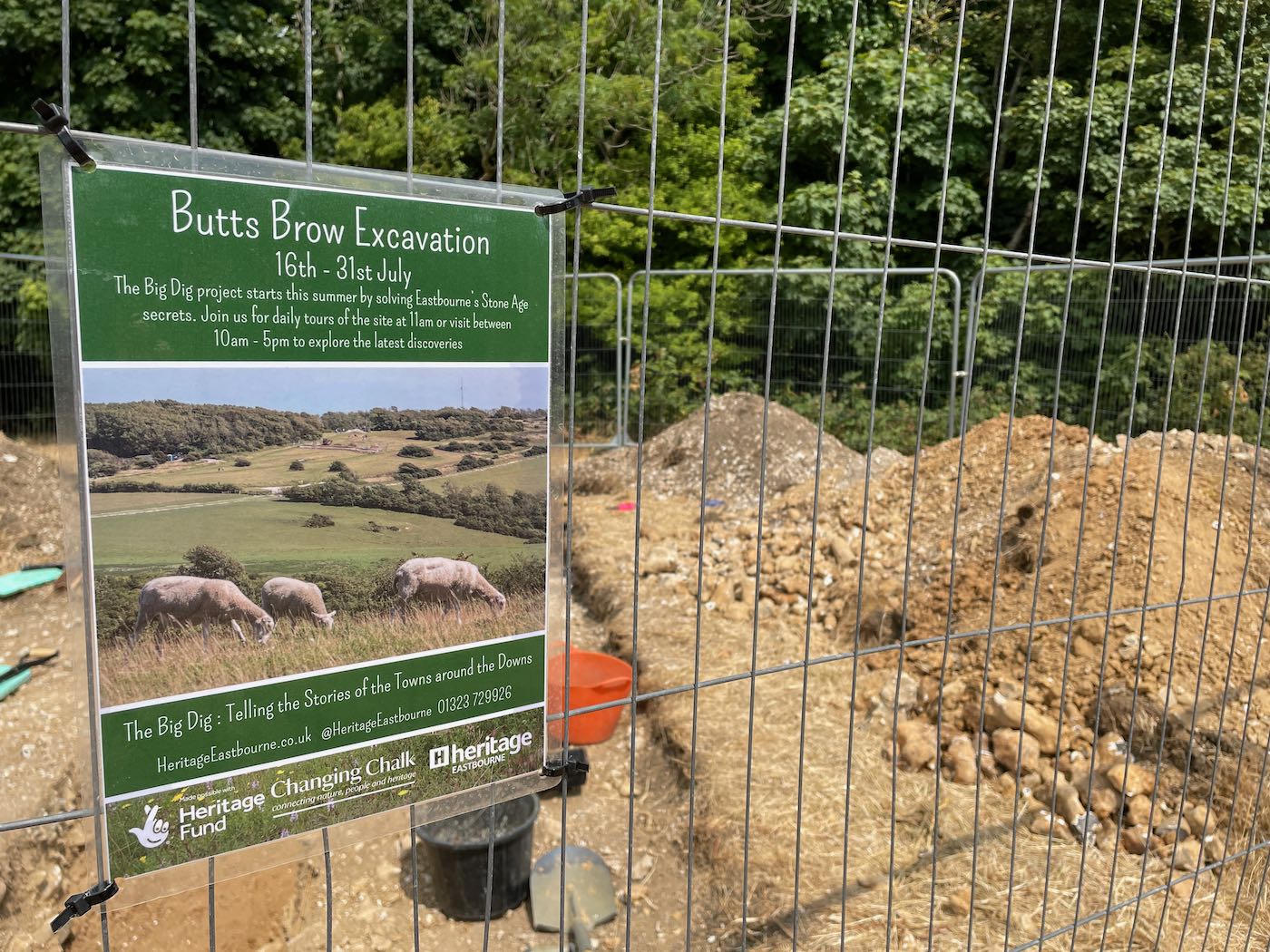
This dedicated group is intent on trying to find out how Neolithic humans used the site about 5,000 years ago. This is about the era of the later Stone Age when hunter gatherers were starting to settle, clear trees and farm.
A ditch and bank of chalk which runs around the hilltop near Willingdon was found a few years ago during previous excavations just above the car park.
Now The Big Dig project – which runs until this weekend – is trying to reach across millennia and find out more about this man-made barrier.
The best guess is that it may have been a monument or ceremonial area where people met rather than somewhere they lived – there would have been no obvious water source this high on the hills.
Katherine Buckland, heritage engagement officer for Lewes and Eastbourne Councils, points out the faintest ridge under the browned grass, which casual walkers are unlikely to notice. This is a continuation of the chalk bank, buried deep under the modern landscape.
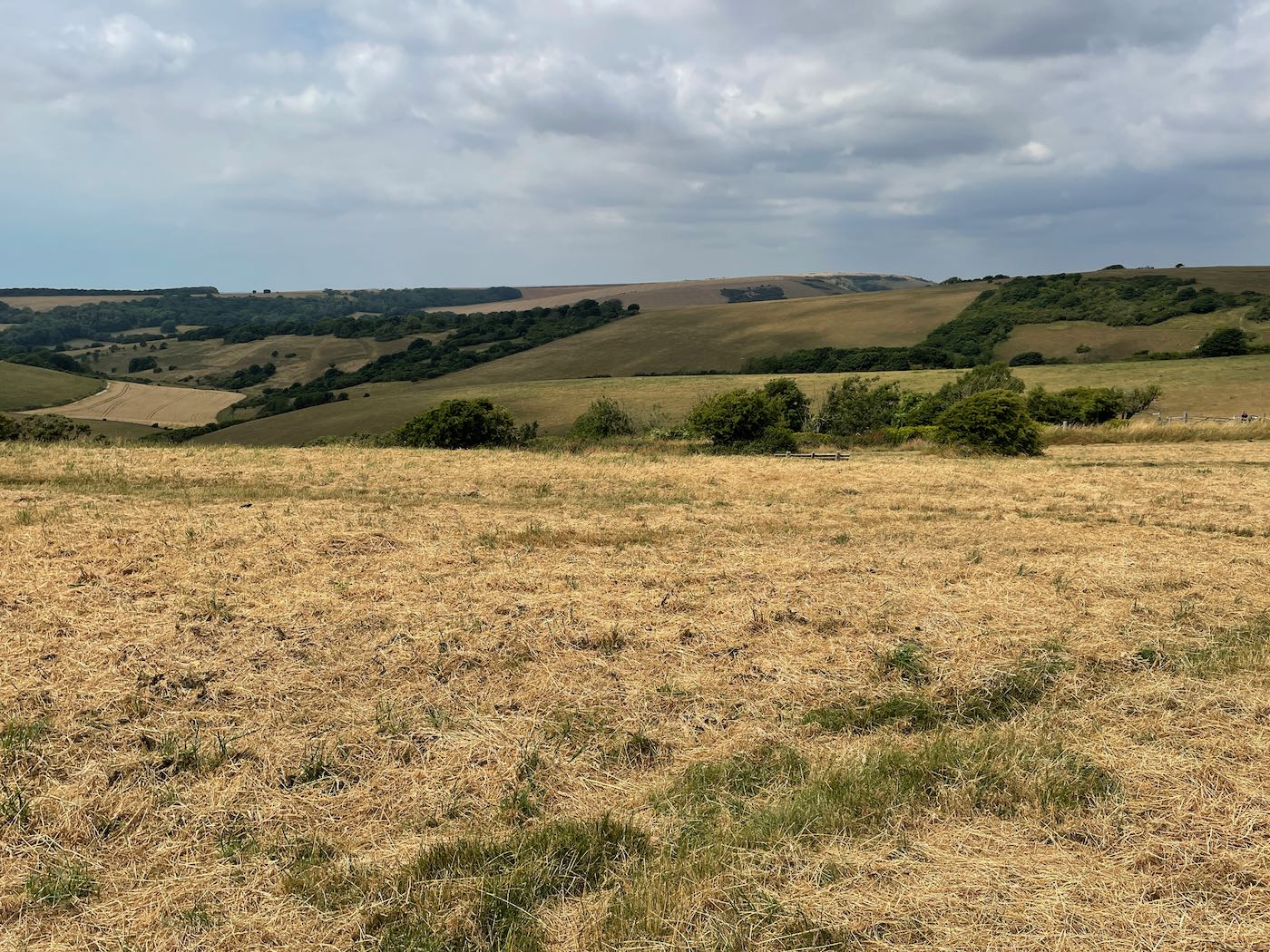
She says there would have been a layer of about one metre of clay and flint on top of the chalk in the Neolithic era, but this had been washed away down the hill over millenia.
One volunteer, who lived just down the hill in Willingdon, reported that she had a big layer of clay and flint on top of the chalk in her garden, apparently proving this theory.
One end of the ditch and an entrance has previously been located. Now much of the work is focused on looking for the other end of the ditch to find out how big it was.
At nearby Combe Hill during another excavation, a rubbing stone used to polish and smooth flint axes was found. These axes would then have been used to fell trees to clear space for farming.
In the current dig, a lot of flint flakes have been found, perhaps left behind by groups of people sitting high on the Downs making tools.
“I just really like looking at holes in the ground!”
Steve Patton, from Brighton, is an archaeologist who is so keen on the Neolithic era, he is spending his annual holiday at the dig.
He is Finds manager at Archaeology South-East, based in Portslade, East Sussex, the commercial arm of the Institute of Archaeology at University College London.
Steve is working in the newer trench, trying to find the base or other side of the ditch. “Ditches and banks are usually to keep livestock in or people and animals out,” he said.
“But it is very unclear what was happening in Britain at the time. People seemed to be building monuments while still being nomadic. A lot are on hilltops, but some are on river bends.
“They could signify meeting points or sacred spaces. You might have had clans from all around Sussex who gathered at these places,” he said.
He thinks these trenches are dated probably to around 3,600 BC or the late Stone Age.
Archaeologists have found no evidence of animal bones or signs of butchery to show that the area was used for day-to-day living.
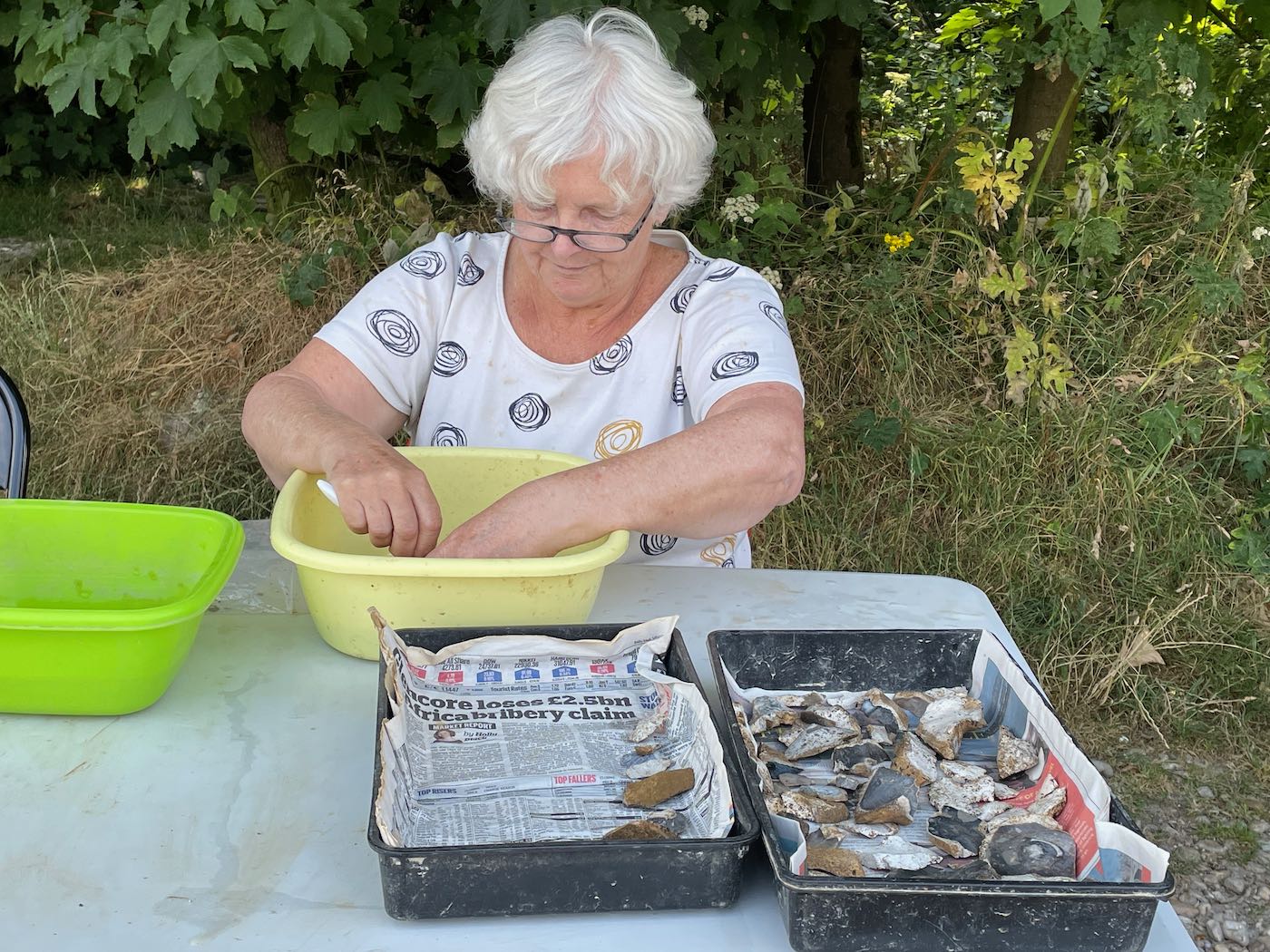
Volunteer Kate Springett, pictured above, is a professor in health teaching. She sits in the shade of the trees with a murky washing-up bowl of water in front of her, a bag of flint – and a toothbrush.
She has a personal interest in the Neolithic period, sparked by a geology trip in her teens as part of a youth hostelling holiday.
"I just really like looking at holes in the ground,” she says, smiling.
Her dream would be to find a hearth to show that an area was someone’s home. Why that in particular?
She thinks for a while: “It is the thought that somebody was definitely there.”
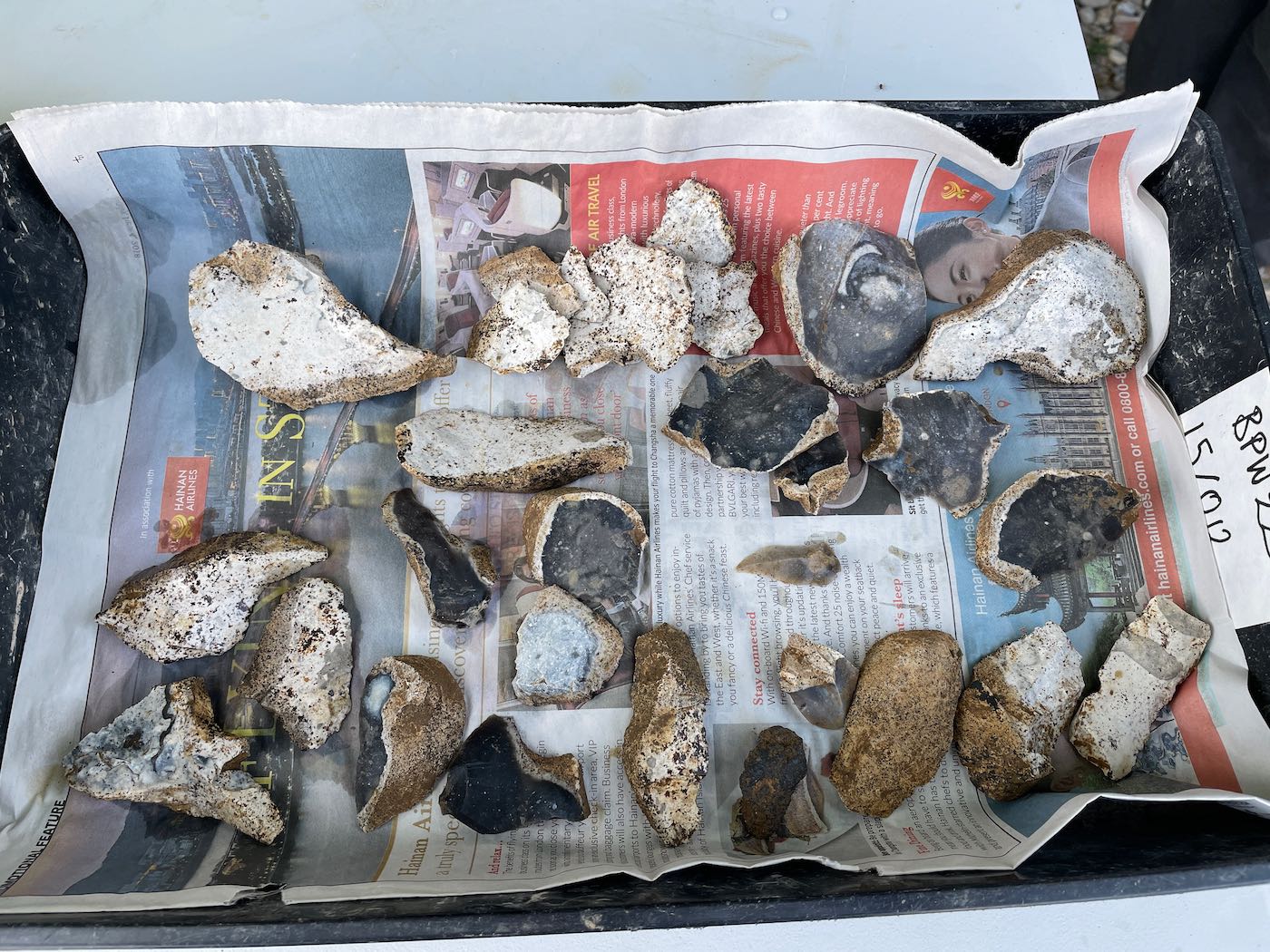
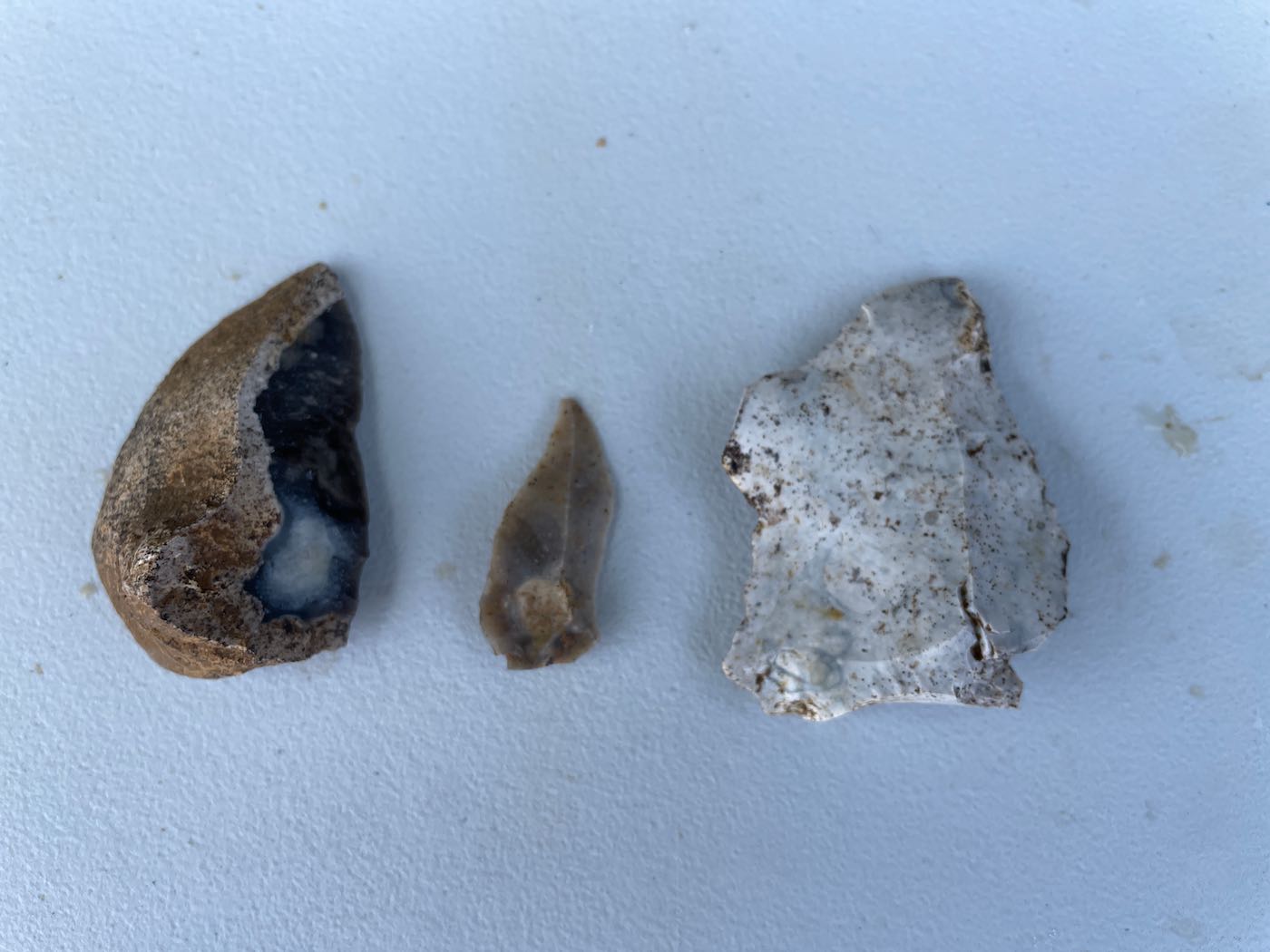
Another volunteer kneels in a trench, scraping carefully then gathering together what she has uncovered.
Di Drummond, pictured at the top, is a retired graphic designer and keen amateur archaeologist from near Tunbridge Wells who is camping nearby while she joins the dig.
She has recently been involved with excavating a 19th century corn mill which is “all mud and metal” so is relieved to be working in the dry among the flints at Butts Brow.
“I think really ancient digs are much more interesting than more modern ones because you have to use your imagination so much,” she says.
“It is really important to get people interested in the local heritage and for children so they can become the archaeologists of the future.
“The more you know about your local area, hopefully the more you value it.”
Gary Webster is heritage officer for Changing Chalk at the National Trust.
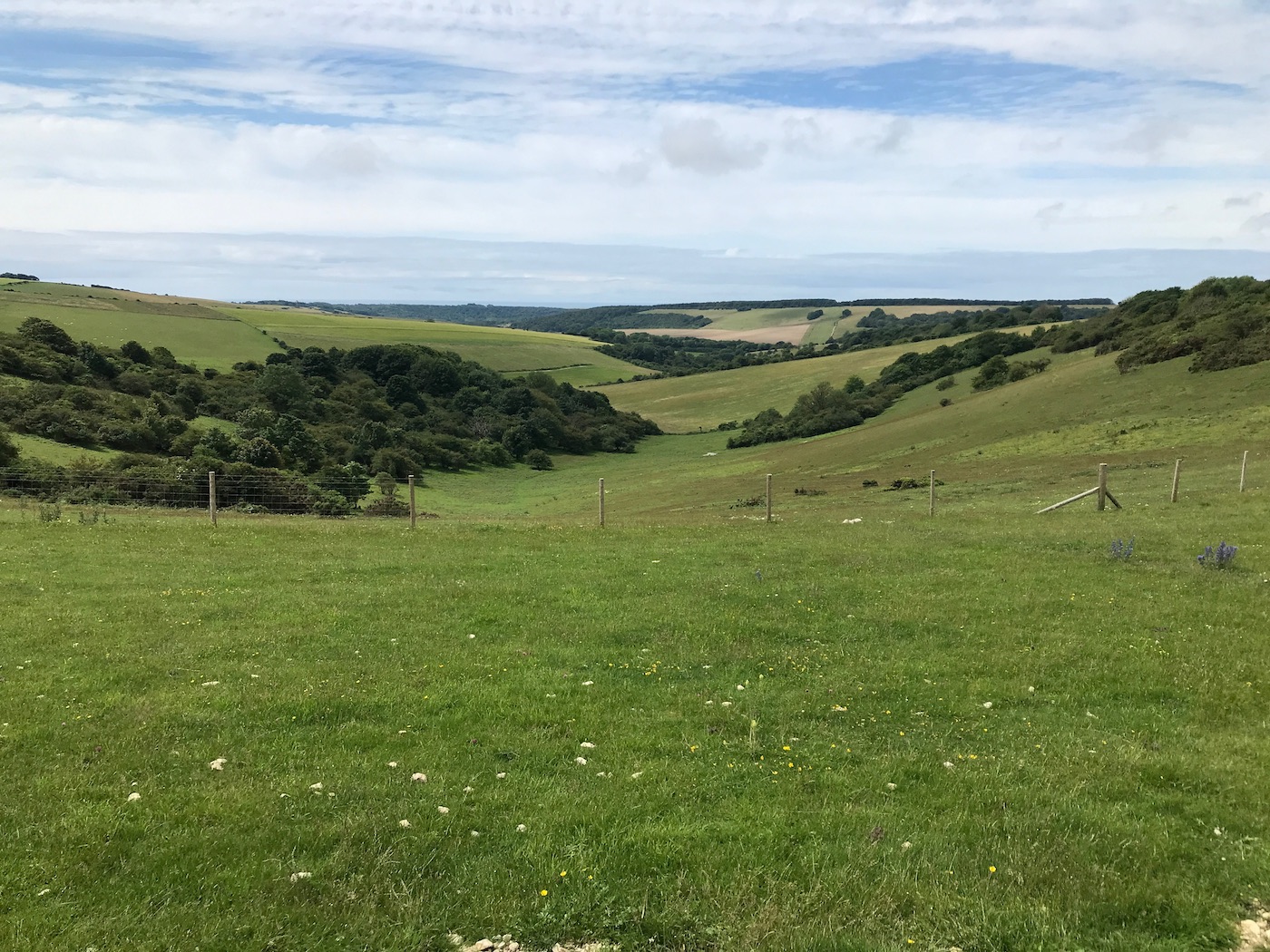
Changing Chalk is a partnership of several organisations which aims to reverse the decline of the fragile chalk grassland and spark interest in the landscape in people living nearby.
He points out that the chalk grassland of the South Downs is sometimes called ‘England’s rainforest’ because it is so dense in biodiversity.
It would have been mostly forests before humans arrived. The chalk grassland was created by the people who cut down trees to start farming around 4,000 BC and introduced grazing herbivores to the land.

Sitting in a trench with his clipboard and camera, Gary says: “If we don’t intervene, it would rewild and predominant species would take over which is not so good for bees and butterflies.
“It is about people getting to know their heritage and identifying with people who used this landscape.
“It’s about getting people to come and use this landscape again now.”
:: The Big Dig started on July 16 and runs until Sunday, July 31. It’s part of the Changing Chalk project, run by a partnership of organisations, including Heritage Eastbourne, led by the National Trust and funded by the National Lottery Heritage Fund and the Postcode Lottery.
Comments are welcome but they are pre-moderated
:: If you like what you have read, please support our aim of bringing high-quality impartial journalism to Eastbourne
[kofi]


